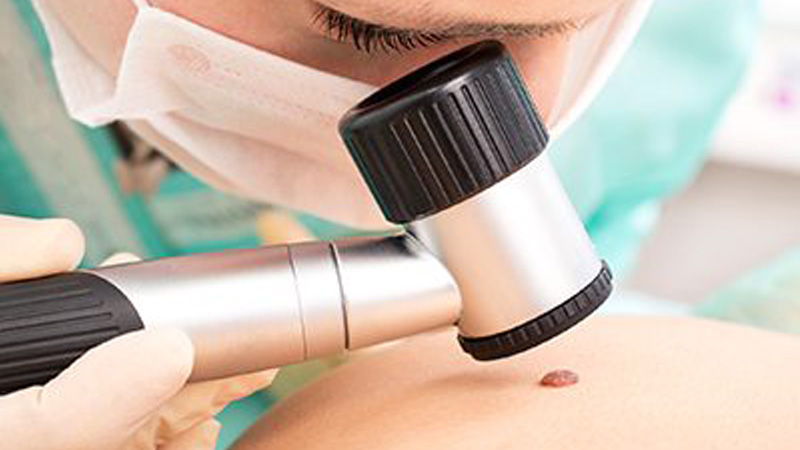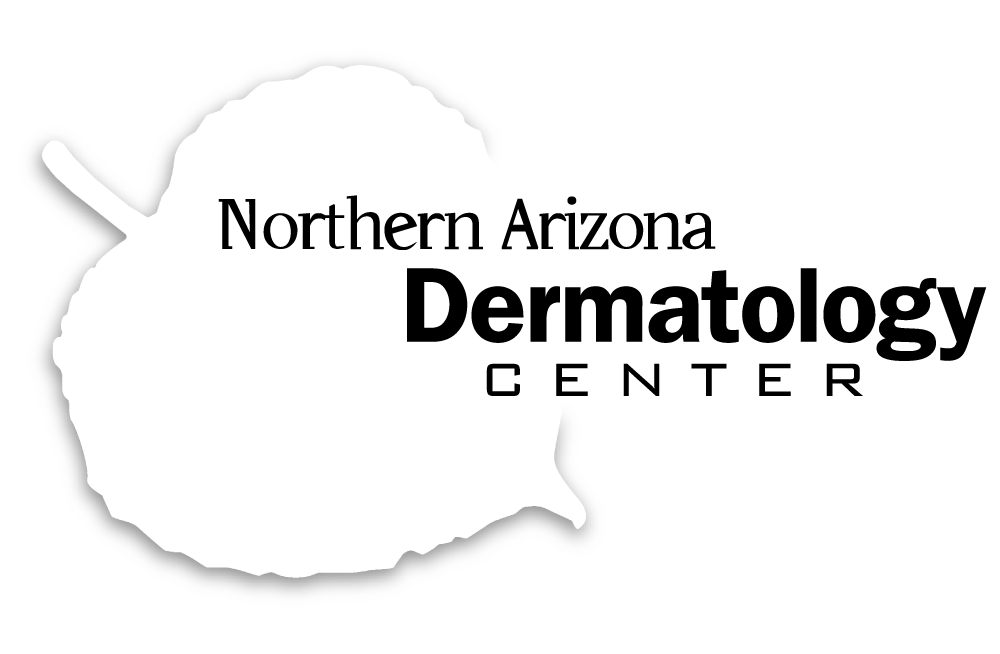Patient Education
Our dermatologists can help keep you and your skin healthy throughout your lifetime. We look forward to proving you with the best care possible.

General Dermatology
We provide the latest in medical dermatology services in all three of our offices in Flagstaff, Sedona, and Cottonwood, AZ.

Skin Cancer & Mohs Surgery
Cancer of the skin is on the rise and we offer many treatment options. Our board-certified physicians are specially trained in treating skin cancer.

Cosmetic Dermatology
We offer several cosmetic dermatology services to improve the appearance of your skin. This includes Botox, Juvederm, and Restylane.
Mohs Micrographic Surgery
Developed by Frederic E. Mohs, M.D. in the 1930s, Mohs Micrographic Surgery for the removal of skin cancer is a highly precise, effective method that excises not only the visible tumor but also any “roots” that may have extended beneath the skin surface. Five-year cure rates have been demonstrated up to 99 percent for first-treatment cancers and 95 percent for recurrent cancers.
Mohs surgery involves the systematic removal and microscopic analysis of thin layers of tissue at the tumor site until all of the cancer has been eliminated. The immediate and complete microscopic examination and evaluation of excised tissue is what differentiates Mohs surgery from other cancer removal procedures.
Only cancerous tissue is removed, minimizing both post-operative wound size and the chance of recurrence. In addition, the entire tumor is cleared and the site repaired in one session.
Mohs physicians are highly trained to function as surgeon, pathologist and reconstructive surgeon during the cancer removal process. Our Mohs surgeons have completed advanced training after dermatology residency through the American Society for Mohs Surgery and all have extensive experience.
Mohs surgery is performed under local anesthetic in our state-of-the art office equipped with surgical and laboratory facilities, and supported by Mohs-trained nursing and technical staff.
Mohs surgery is most commonly used for basal and squamous cell carcinomas, although it can be recommended for the eradication of other cancers such as melanoma. Cancers that are likely to recur or have already recurred are often treated using this technique because it is so thorough. High precision makes Mohs surgery ideal for the elimination of cancers in cosmetically and functionally critical areas such as the face, hands, feet and genitals.
Surgical Excisions
Surgical excision is recommended for malignant (cancerous) and certain benign (non-cancerous) skin lesions. This procedure is performed under local anesthetic in our fully-equipped office and takes approximately 30 minutes, depending on the size of the lesion.
Depending on the treatment area, it takes approximately 2-6 weeks to heal from an excisional procedure.
Once the target lesion is removed, the area is brought back together with stitches to allow a faster healing time. These stitches may be dissolvable, where they will be absorbed by your body over the next 90 days, or non-dissolvable, where they will need to be removed in 7-14 days.
We always recommended follow-up appointments after excisional procedures to address the cosmetic results of the scar. We optimize your scarring results with many tricks, including cortisone injections and laser treatments.
Emergency Cases
*Please Note:
If you are not a physician, this service is for our established patients only who recently had an in-office procedure.
Other Medical Issues
If you have any other medical emergency, you must call 911 or visit your nearest emergency room.
Quick Links
Here are a few important links for your to access below. Reminder, Some same day appointments available for urgent needs.
Effective April 1, 2025, our No Show Fee will be increasing to $100.
Locations
You can find our locations in Flagstaff, Sedona, and Cottonwood.
Patient Portal
Acess your medical records & results. You will find updated medical information. Plus, you can pay your bill here.
Pay Your Bill Online
Here is a quick and easy way to pay your bill online from the comfort of your own home.
Quick Links
Home
Our Providers
Services
For Patients
Contact
Our Services
General Dermatology
Phototherapy
Skin Cancer & Mohs Surgery
Cosmetic Dermatology
Blue Light Therapy
Our 3 Locations
Flagstaff, AZ – 1490 N Turquoise Drive
Sedona, AZ – 95 Soldiers Pass Rd., Suite C-2
Cottonwood, AZ – 450 S. Willard St. Suite 115
Follow Us
Copyright © 2024 Northern Arizona Dermatology Center | All Rights Reserved. Design by Mountain Mojo Group

